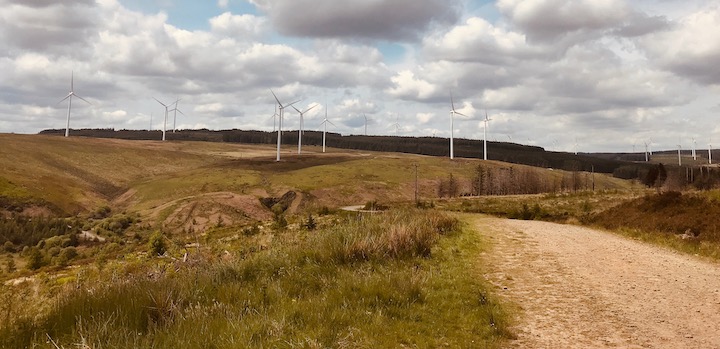Wind Farm Proposal in Rhondda Cynon Taf

Pennant Walters Ltd, in collaboration with its parent company the Walters Group, has submitted plans for an exciting wind farm project in Rhondda Cynon Taf. The proposed wind farm, located at Mynydd y Glyn, east of Trebanog, has the potential to generate renewable energy with a capacity of 30 megawatts (MW), capable of powering more than 15,000 homes.
The planning statement accompanying the application highlights that, based on indicative calculations using smaller capacity turbines of 3.45MW, the project would generate approximately 24.2MW of clean, sustainable energy. This would effectively meet the electricity needs of approximately 15,376 households, contributing significantly to the region’s green energy transition.
In addition to the substantial environmental benefits, the wind farm development promises to have a positive impact on the local economy. The construction phase alone is expected to create around 41 full-time equivalent jobs, with an estimated expenditure of £9.6 million in Wales. Once operational, the project will provide four permanent positions and contribute approximately £700,000 annually to the local economy.
Pennant Walters and the Walters Group are committed to fostering local ownership, with both companies headquartered within Rhondda Cynon Taf. This emphasis on local involvement demonstrates their dedication to supporting the community and ensuring that the wind farm project aligns with the region’s interests.
The proposed site encompasses approximately 182 hectares on the summit and upper slopes of Mynydd y Glyn, south of the Rhondda River. Situated around 1km east of Trebanog and 600m southeast of Glynfach, the wind farm will be easily accessible via a new track branching from a newly constructed junction on the A4233.
Peat, this was taken from Natural Resources Wales’s response to development

The site, characterized by its openness and exposure, presents an ideal location for the wind farm, offering unobstructed wind resources to maximize energy production. It will feature various infrastructure components, including a substation and control building, temporary construction compounds, turbine foundations, underground power cables, internal access tracks, and an overhead line section connecting to the existing National Grid substation. The project’s environmental impact has been thoroughly considered, and measures have been proposed to mitigate potential effects on local landscapes, biodiversity, and heritage assets.
Planning and Environment Decisions Wales
The final decision on the application will be made by Planning and Environment Decisions Wales (PEDW) due to the project’s classification as nationally significant. The planning statement emphasizes that the wind farm aligns with government policies and supports the ambitious target of generating 70% of consumed electricity from renewable sources by 2030. With positive policy frameworks favoring onshore wind, it is expected that consent for this development will be granted.
Pennant Walters Ltd aims to prioritize sustainability and minimize the project’s environmental footprint. The company plans to source materials locally wherever possible, ensuring economic benefits extend to the surrounding communities. Additionally, the applicant has committed to enhancing the quality of habitats at the site, acknowledging its designation as a Site of Importance for Nature Conservation.
The proposed wind farm in Rhondda Cynon Taf represents an exciting opportunity to advance renewable energy generation and support the Welsh Government’s green energy targets. By harnessing the power of wind, this project will not only provide clean electricity to thousands of homes but also foster economic growth and create employment opportunities in the region.

